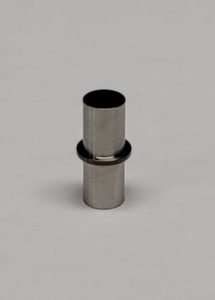Why Centerless Form Grinding Is Never Going Out of Style
If you’re familiar with form grinding, you already know it’s a centerless grinding service that efficiently achieves multiple features with tight tolerances. But if this timeless method of centerless grinding is hardly even on your radar, you aren’t alone.
That’s because many folks in the manufacturing industry consider form grinding to be a lost art, as it requires outsourcing to shops that maintain and upgrade the old equipment needed to perform the service well.
But despite the age of these machines, form grinding actually performs better than a lathe or mill for certain parts like mandrels, stylets, pins, cutting tools, core pins, punches, and tubing. It also offers the advantage of grinding multiple features at once.
United Centerless Grinding & Thread Rolling is excited to keep the art of precision centerless form grinding alive as an efficient alternative to some modern machining methods.
What Form Grinding Can Do for You
Form grinding consists of placing geometric part forms directly onto a grinding wheel with a cutting face contoured to the reverse shape of the final cylindrical part. Here are four reasons our customers love this grinding service:
This part has a .0001 tolerance on each end and a close concentricity requirement.
Maintains tight tolerances. When a machine is only capable of grinding one diameter at a time, there’s a greater chance of inaccuracy throughout the part. With form grinding, however, it’s possible to grind multiple diameters on the wheel simultaneously, allowing us to meet concentricity requirements down to about .0001” and consistently hold close tolerances more efficiently than CNC machines.
Increases shop capacity. While it’s possible for machine shops to hold extremely tight tolerances on these parts themselves, an operator must be standing by the machine all day to ensure that parts come out to spec. If, on the other hand, you can rough out the part and then send it to a proper centerless grinding shop like United CGTR, you free up your own machinists to work on other jobs.
Compatible with heat-treated parts and exotic materials. Form grinding is especially useful for hard materials like Inconel—and can even be performed after heat-treating to minimize warping.
We ground this Inconel shoulder pin for an aerospace customer. It has 2 ground diameters—both with a .0001 tolerance—and the concentricity from each diameter to the next is .001”. It’s a great example of what form grinding can do for your challenging parts.Ideal for high volumes. With form grinding, we can handle high volumes of over 1 million parts much faster than with CNC turning. (We can do small lots as low as just 1 part, too!) If a lathe completes one part in approximately 1.5 minutes, a form grinder can produce 6-8 pieces in that same time frame.
That’s because the manual nature of form grinding makes cycle changes much quicker. CNC turning requires several steps to load parts individually into the chuck and machine. But with form grinding, operators have direct access to the machine and are able to easily feed parts through the wheel.
Whether your machine shop is at capacity or you simply want to increase efficiency for high-precision parts, contact United Centerless Grinding & Thread Rolling today for form grinding services!

